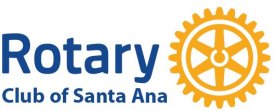A One Page History of the Beginning and Growth of Rotary
In 1905…37 year old attorney Paul Harris changed the world.
1891-92-93 Paul Harris, who was raised by his New England grandparents with values of tolerance toward all, gained his law degree in 1891. After several years of relocations and job changes, he announced that he was going to Chicago to practice law. One evening, in the early 1900’s, Paul went with a professional friend to his suburban home. After dinner, as they strolled through the neighborhood, Paul’s friend introduced him to tradesmen in their stores. This reminded Paul of his grandparents’ home in New England. “Why not have a fellowship composed of businessmen from different occupations, without restrictions of politics or religion?” he thought.
On February 23, 1905, Paul Harris had dinner with his several friends of varying professions. Harris proposed that they form a club. No name was chosen for the group, but they agreed to meet next at the offices of another potential member. At the following meeting, others joined, among them a printer who created the “name badge” version of the Rotary “wheel”. It was also decided that “rotating” the meetings among members’ homes and places of business made “Rotary” the most logical name.
1908-1909 Paul was very interested in starting Rotary in other cities. The second Rotary club was founded by Homer Wood in San Francisco in 1908. Wood then quickly organized Oakland #3
1910-1911 By August 1910 there were sixteen clubs and the National Association of Rotary Clubs was organized and held its first convention that year, in Chicago. At the 1911 Portland Convention, “Service, Not Self” was introduced by Frank Collins of Minneapolis. It later became “Service Above Self. ” The slogan “He profits most who serves best,” was also read there. It had been written by Arthur Sheldon and delivered by him at the first convention the previous year in Chicago. Both were approved by RI in 1950. Learn what Sheldon really meant by his well thought phrase. You can study all of Rotary’s conventions from 1910 on and learn about each of our presidents from Paul Harris to the present as well as their clubs from our website dedicated to presidents of Rotary. Another important event at the 1911 Portland convention was the platform brought forward by Seattle #4. This platform, is still essential to the philosophy of Rotary today.
1912-23 When clubs were formed in Canada and Great Britain in 1912, the name was changed to the International Association of Rotary Clubs, and was later shortened to Rotary International in 1922. Paul Harris was the first president of the National Association of Rotary Clubs, serving two terms. He was named President Emeritus of the International Association in 1912 and served until his death in 1947.
ROTARY TODAY
There are over 31,000 Rotary clubs, in 164 countries, whose members carry on club, vocational, youth, community and international service. The Rotary Foundation of Rotary International annually spends over $100 million on international education and humanitarian programs, providing grants which save lives and improve conditions throughout the world. Rotary also sponsors international ambassadors of good will through educational awards to university students and teachers, and through international exchanges of business and professional people. Today the Rotary Foundation scholarship program is the world’s largest privately funded international scholarship program. Approximately 1,100 scholarships are awarded annually. Rotarians have raised some 438 million dollars for the PolioPlus program alone as well as provided thousands of volunteers to administer the vaccine around the world. You may have heard, we are **this close** to eradicating polio worldwide.
This short history was produced by Rotary’s Global History Fellowship (An Internet Project): http://www.rotaryhistoryfellowship.org/ Sources and applicable copyrights are listed at the website links found on this page. Contributors to this project are members of our board of directors and historians. The project is sponsored by clubs, districts and fellowships on every continents.
